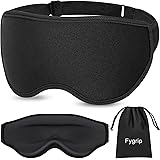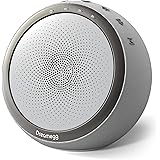Mastering Plane Sleep: Ergonomic Tips for a Comfortable Economy Flight
For many travelers, the thought of sleeping on a plane, especially in an economy seat, brings a sigh of resignation. It often feels like an impossible feat, leading to discomfort, stiffness, and disrupted travel plans. Achieving restful sleep during a flight is challenging, but it’s not entirely out of reach.
The accompanying video features certified professional ergonomist Carla Jaspers, an occupational therapist and industrial designer. She shares invaluable insights into how to tackle the unique challenges of sleeping upright. Her advice focuses on understanding the body’s needs and leveraging ergonomic principles to transform your in-flight experience.
Understanding the Ergonomics of Seated Sleep
Sleeping upright in a plane seat puts significant strain on your body. Unlike lying down, your spine is constantly working against gravity. This can lead to various issues, including compressed vertebrae and awkward postures.
According to Jaspers, these positions can put pressure on your spine at different levels. Your hips and knees might experience excessive flexion, and your spine can become rounded. Such sustained postures can cause discomfort and wake you up.
The Risks of Poor Plane Sleep Posture
Poor posture during seated sleep comes with several risks beyond mere discomfort. A major concern is contact pressure, which occurs when soft tissues are pressed against hard surfaces for extended periods. This can happen if you lean on the tray table incorrectly.
Soft tissue compression can slow blood flow to your extremities. This often results in numbness or tingling. Furthermore, nerves can become impinged, which is a common reason people wake up mid-sleep, disrupting their chances of deep rest.
Rethinking the Tray Table Strategy for Rest
Many passengers instinctively try to use the tray table for support when attempting to sleep. While it seems like a convenient option, propping yourself up on your forearms has significant drawbacks. The direct contact pressure against a hard tray table can irritate tissues.
This awkward positioning can lead to discomfort just as it would during your waking hours. Thankfully, there are solutions. Inflatable and memory foam cushions are available that specifically address these risk factors.
These specialized cushions provide a soft surface for your body to rest. They are designed to hold your arms comfortably while cradling your head and neck. The goal is to position your head and neck in a neutral posture, which significantly improves comfort and reduces strain.
However, the tray table might not always be the best long-term solution. Depending on your height or how far the seat in front reclines, it may only serve well for a short nap. For extended, high-quality sleep on a plane, other strategies are often more effective.
Optimizing Your Seat’s Recline and Back Support
When you have to sleep in an economy class seat, you are definitely up against some challenges. Your body naturally prefers to sleep in a fully supported, lying-down position. This allows your spine, hips, pelvis, and lower extremities to be properly aligned and free from excessive weight-bearing.
Even a slight recline can make a big difference. Stealing a couple of degrees of recline from your seatback can shift your body into a more supported sleep position. This small adjustment can alleviate some pressure and make rest more accessible.
Beyond recline, supporting your spine is crucial. Placing a gentle cushion behind the seat back can provide beneficial lumbar support. This helps maintain the natural curve of your spine, preventing it from rounding excessively during sleep.
The more head and neck support you can provide, the better your chances are for achieving restful sleep. This leads us to one of the most important travel accessories.
The Essential Travel Pillow for Plane Sleep
A good travel pillow is often the cornerstone of comfortable plane sleep. However, not all supports are created equal. The ubiquitous U-shaped neck pillows are a common choice, but their effectiveness varies widely.
The primary goal is to keep your head and neck as neutral as possible, counteracting gravity’s pull in an upright position. Many ergonomists recommend pillows that wrap around the neck completely. These designs often have extra support to prevent shifting during sleep.
Full neck support pillows go beyond just preventing forward flexion. They also support lateral flexion (side-to-side movement) and even some extension. This comprehensive support holds your head in a comfortable yet stable position, allowing your neck muscles to relax.
When choosing a pillow, consider the material (memory foam, inflatable, microbeads) and its adjustability. A pillow that can conform to your unique neck shape and provide firm yet gentle support will be your best ally for better sleep on a plane.
Improvised Comfort: When You Forget Your Gear
Sometimes, despite the best intentions, you might find yourself on a flight without your preferred travel pillow or cushion. In such situations, creativity becomes your friend. You can try to make do with layers of clothing.
A rolled-up jacket, a sweater, or a scarf can be used to create improvised support. You can place it behind your neck, against the window, or even folded on the tray table (if using a cushion on top). The key is to create some barrier between your body and hard surfaces, and to add a little elevation or stabilization.
The main takeaway here is the importance of planning ahead. Even if it means throwing an extra scarf into your carry-on, having something to cushion or support your body can make a significant difference. Being prepared for your flight’s evening hours or a nap is always beneficial.
Beyond Posture: Holistic Comfort Tips
Beyond optimizing your posture and using supportive gear, several other factors contribute to comfortable plane sleep. These tips help create a more conducive sleep environment in the often-unpredictable cabin.
-
Limit Light Exposure with an Eye Mask: Darkness signals to your brain that it’s time to sleep. An eye mask blocks out ambient cabin lights, screen glares, and sunlight, helping to regulate your body’s natural sleep-wake cycle.
-
Ensure Thermal Comfort with Layers or a Blanket: Airplane cabins can fluctuate in temperature, often becoming quite cool. Having layers of clothing or a small travel blanket allows you to regulate your body temperature, which is crucial for falling and staying asleep.
-
Reduce Auditory Stimulation with Noise-Canceling Headphones: The constant hum of the engines, passenger conversations, and announcements can be highly disruptive. Noise-canceling headphones create a personal quiet zone, blocking out distractions and allowing your mind to relax.
Strategic Seat Selection for Better Sleep
The choice between an aisle, middle, or window seat is quite subjective. What one person finds comfortable, another might not. Each seat type offers unique advantages and disadvantages for sleeping on a plane.
-
Aisle Seat: This option offers easy access to the lavatory and allows you to stretch your legs without disturbing others. However, the trade-off is that you’ll likely be woken up every time your seatmates need to get out, or by people walking past.
-
Middle Seat: Generally, the advice is to avoid the middle seat if possible. It offers the least amount of space and support, often leaving you squeezed between two other passengers. This makes achieving any form of comfortable rest particularly difficult.
-
Window Seat: Many find the window seat ideal for sleeping because it provides a solid surface to lean against. This can be fantastic for head support. However, remember to add a pillow or a rolled-up piece of clothing as a cushion between your head and the hard cabin wall to prevent discomfort.
Ultimately, consider your personal habits. If you need to move frequently, the aisle might suit you better. If stability and leaning support are paramount, the window seat with proper cushioning is a strong contender.
Embrace Movement for Dynamic Rest
Even while trying to sleep, your body is built to be dynamic and needs movement. It’s important to allow yourself to shift positions slightly, much like you would in a regular bed. Staying completely still for hours on end can lead to stiffness and discomfort.
Movement breaks, even small ones, are vital for lubricating your joints and releasing muscle tension. This helps mitigate strain and improves overall circulation. Gentle stretches or repositioning can make a significant difference in your comfort levels during a long flight.
Planning ahead for your next journey by incorporating these ergonomic strategies can vastly improve your chances of getting quality sleep on a plane. From optimizing your seat to choosing the right accessories, every small adjustment contributes to a more restful flight experience, even in economy class. If all else fails, and truly restful sleep feels impossible, then perhaps it’s always worth it to consider an upgrade for ultimate comfort.








